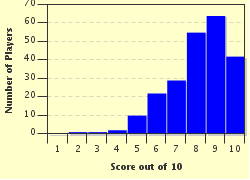Quiz Answer Key and Fun Facts
1. Mary Anderson (1866-1953) gave us a vehicle invention that made driving a whole lot safer and dryer. Taking note of the times in which she lived, can you name it?
2. Olivia Poole is loved by busy mothers everywhere for her invention which kept babies soothed, calm or amused. What was it?
3. Not only was Grace Murray Hopper a rear admiral in the U.S. Navy, her work in computer programming led to the development of which computer language?
4. Hedy Lamarr was a beautiful actress, with a clear and incisive mind as beautiful as her face. With a front page spread in many a magazine, what else did she give us?
5. Amazingly, Rachel Zimmerman, during the 1980s, was only twelve when she developed a program that enabled people with communication difficulties to connect with others. What was that invention?
6. Tapputi was a female overseer from the Royal Palace during the Babylonian period of history. Much appreciated by the ladies, she is believed to have created the first kind of which product?
7. Hildegard of Bingen was one incredible woman with remarkable skills in many areas. Today however, as far as inventions go, she is known for the creation of something that would delight a teacher's heart. Do you know what that is?
8. Medical specialist Virginia Apgar made a significant contribution to the well-being and health of new born babies within ninety seconds of their birth, by her development of which diagnostic tool?
9. Housewives everywhere must give a silent sigh of appreciation for Ruth Rogan Benerito's labour saving invention every time they look at an iron. What is that invention?
10. Erna Schneider Hoover revolutionised modern communications systems in the early 1950s with which invention?
Source: Author
Creedy
This quiz was reviewed by FunTrivia editor
bloomsby before going online.
Any errors found in FunTrivia content are routinely corrected through our feedback system.

